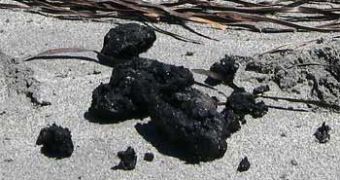In the aftermath of Hurricane Isaac, which only recently hit the northern Gulf Coast of the United States, some of the people living in the areas that make up the Mississippi River Delta noticed that ever more tar balls were being washed ashore.
Later on, this phenomenon was found by researchers to slowly begin manifesting itself in coastal Louisiana, Mississippi and Alabama.
According to the US National Wildlife Federation, it is quite likely that similar incidents will become a frequent sight in the years to come, primarily because the ecosystems both in and surrounding the Gulf of Mexico have yet to recover from the BP oil spill, which took place only two years ago.
Although it may be true that, following said major oil spill, tar balls kept showing up near the coastline on what some would call a regular basis, the people living in this part of the US argue that their number increased exponentially after Hurricane Isaac had hit this country.
In their own words, these tar balls were now “a lot more than normal.”
Alisha Renfro, environmental scientist presently employed at the US National Wildlife Federation, explained how, “They [tar balls] continue to wash up because there’s a lot of weathered oil still out there, either just offshore or just beneath the surface of the sand.”
Backing up this claim, David Muth (i.e. Louisiana state director for the US National Wildlife Federation), stated that, “It will probably be an issue for a long time, especially as many people conjecture that there are still tar mats laying on the bottom that you can't easily clean up.”
Tar balls aside, it seems that following Hurricane Issac several local newspapers reported sightings of oiled birds and wildlife.
In spite of the fact that no direct link can be established between these sightings, the storm and the 2010 oil spill, David Muth believes that, “This is further evidence that we have not yet completely learned the lessons of the Gulf oil disaster. Oil could be here for decades.”

 14 DAY TRIAL //
14 DAY TRIAL //